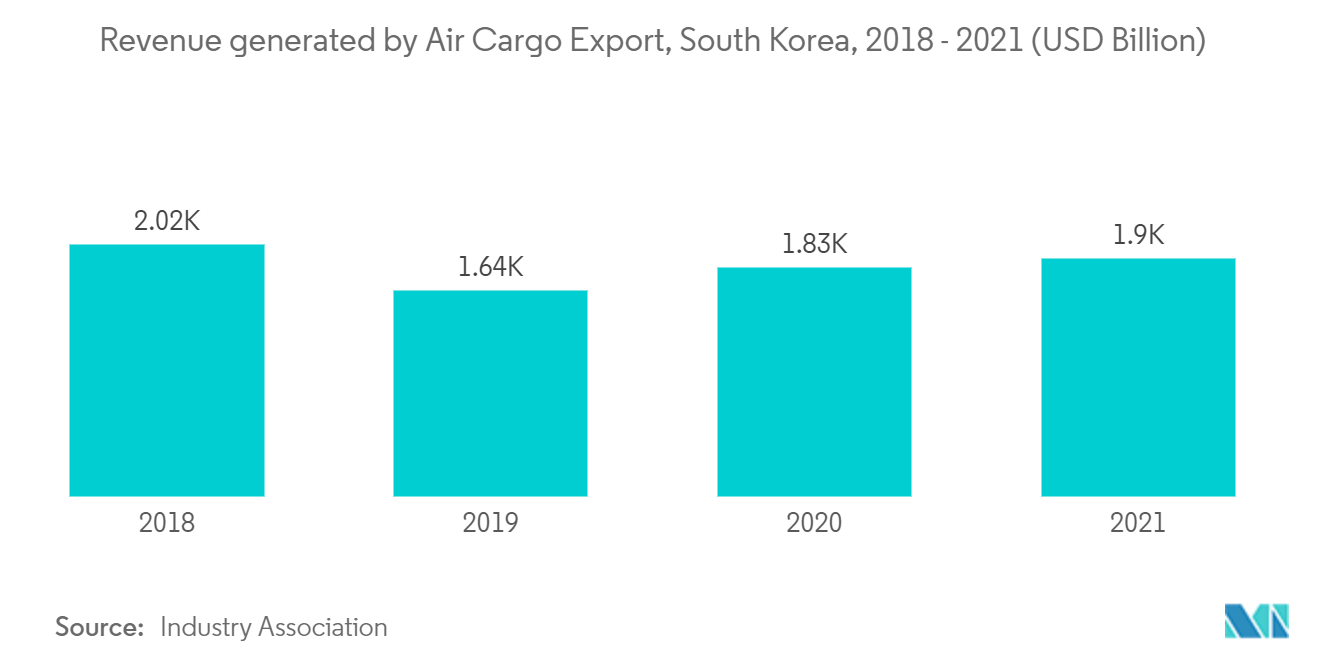Market Trends of South Korea Third-Party Logistics (3PL) Industry
Boom in Air Cargo contributing to 3PL market in South Korea
- The growth of e-commerce and global trade has significantly increased the demand for air freight services, creating opportunities for 3PL providers specializing in air cargo logistics.
- In 2021, exports of high-value-added products like displays (OLEDs), computers (SSDs), semiconductors, and pharmaceuticals saw considerable growth, contributing to the rise in air cargo exports. Although maritime cargo exports were generally slow, there was a notable upward trend in secondary battery exports, leading to an increased proportion of air cargo exports. Specifically, exports to Germany saw a rise in the proportion of air cargo exports.
- In August 2021, Korean Air, South Korea's largest airline and flag carrier, reported a 31% increase in second-quarter profit. This growth was propelled by record revenue in its cargo business, which continued to support the airline despite the lack of passenger flights. The airline's revenue for the second quarter of 2021 surged by 16% compared to the previous year, reaching KRW 1.95 trillion (USD 1.7 billion), while the operating profit rose to KRW 196.9 billion (USD 0.15 billion). Notably, its cargo division achieved revenue of KRW 1.51 trillion (approximately USD 1.19 billion), marking the highest in its history. This was attributed to companies restocking in anticipation of economic recovery and a shortage of capacity in the shipping industry.

Growth of E-commerce in the Country is Driving the Market
- South Korea ranks as the sixth-largest e-commerce market globally, projecting a revenue of USD 118 billion for 2022, trailing behind China, the United States, Japan, Germany, and the United Kingdom. The ramifications of economic globalization have led to the gradual spread of disputes between Russia and Ukraine, affecting South Korea.
- Online retail sales in South Korea constitute 32% of total retail sales, standing second only to China (46%) and the United Kingdom (36%). Notably, countries with developed e-commerce sectors, like Indonesia (20%) and the United States (16%), follow suit.
- Regarding specific categories, fashion products dominate the Korean e-commerce market, with an estimated revenue of USD 41 billion expected by 2025. Electronics are projected at USD 27 billion, while beauty, health, personal care, and home care collectively amount to USD 19 billion. Additionally, Toys, Hobbies, and DIY products are forecasted to generate USD 17 billion in revenue.
- Industry experts anticipate South Korean e-commerce revenue to sustain a 4% annual growth rate in the upcoming years. In comparison, the global revenue is forecasted to surge by 10% within the same period, reaching a 12% increase by 2025. The percentage of online shopping in South Korea is anticipated to hold relatively steady at 39% in 2025, up from 37% in 2022.


